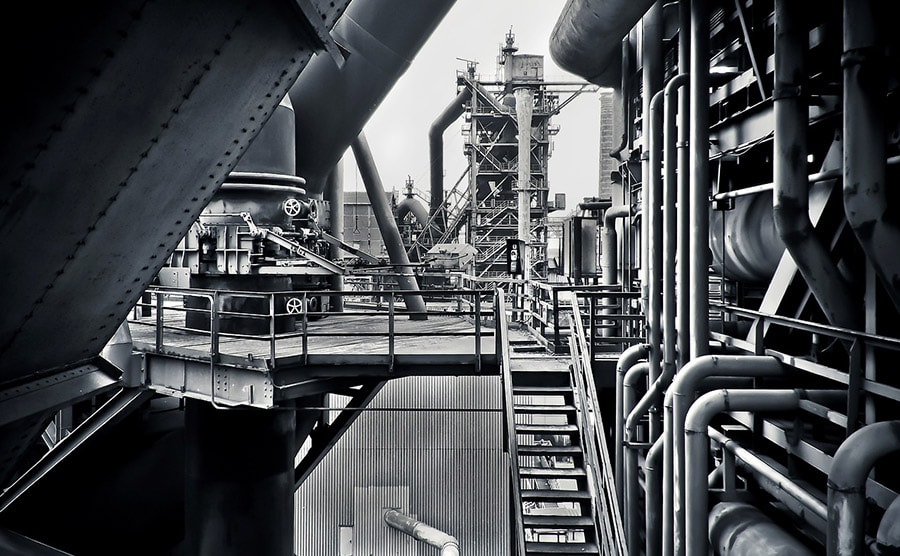What is it and how to perform a detailed engineering (Part 2)
18-07-2018

STRUCTURE DETAIL ENGINEERING
So far we have seen the main stages of the detail engineering. But to know exactly how it is carried out in a particular project, we must define the methodologies used in projects for industrial plants.
Therefore, in this post we will explain previous studies and analyzes necessary for proper engineering detail:
- Study commission. Pre-planning tasks.
- Analysis of previous work.
- Check specifications and scheduling.
- Subdivision of problem-project sub-problems.
- Study and calculation of each subsystem.
1. Study request. Pre-planning tasks
This study has an varying importance depending on the importance and characteristics of the project. If the previous phases, the feasibility study and basic engineering have been developed by other engineers, the start of work may bring additional complications. The commission will be defined whenever possible by answering questions such as:
- Are the proposals of the basic design and scope are known?
- Are maximum fees available for the development of detailed engineering known?
- Are customer requirements are known in relation to quality, cost and completion time available?
- Are human and material resources engineering is willing to assign to the completion of work known?
2. Analysis of previous work
To analyze the previous work should begin gathering information available about the project. This compilation is usually quick because the fundamental documentation must be in previous studies and basic design, or is easy to achieve by the actors who have participated in the project so far. After analyzing the information gathered the project manager must be able to answer questions such as:
- What is the production plant and main process sections.
- Which vendors have offered processing machinery. They are adequate and sufficient?
- What organization is planned for the new plant?
- What level of automation is provided at the plant?
- What marks the customer specifications, to fix aspects such as quality, cost, time, safety, environmental impact, etc.?
- What condition the building planning regulations?
- What are the characteristics machinery: performance, weight, power, action on the building, etc.?
- What rules apply to the project?
3. Check specifications and scheduling
Having resolved the questions in the previous section, the project manager can continue to advance in the definition of activities to be developed in the project. For them should check the specifications that limit the project, most of which have appeared to be responding to the above questions.
With the data collected and the conclusions that have been reached, the project manager is able to establish deadlines, finalize the design team under his supervision will perform the necessary activities to define the entire project.
Planning tasks should be carried out from two realities:
- Which emerges from the characteristics of the project and which will divide the same as subsystems and parts to be solved.
- Which, based on human and material resources will allow to set the tone and terms of design in each of the component parts.
4. Branch of the problem into sub-project
The working method is to divide the different subsystems imagining system, and if necessary, each subsystem components, which in turn can be divided into parts. This applies until the last partition can be resolved by known methods.
The two key criteria for dividing a system into subsystems, components and parts are:
- Each subdivision must be such that interactions between divided parts are as weak as possible in order to model each part as a problem that includes a minimum of external conditions.
- Each subdivision must be such that corresponds to a specific technology, as this means they can divide tasks among specialists involved in the design team.
In the case of industrial plant projects subsystems that can be defined are: organizational, process, building and facilities. Each of which can be divided into components and said components in parts.
For example: the plant facilities can be divided into:
- power
- fluids
- Weather
- Security
And the first turn in:
- Lighting
- Low voltage
- Transformer
- protections
5. Study and calculation of each subsystem
Since we started with the project activities, until now, the main have been assumed by the project manager. From now on, the design and calculations of each subsystem will be responsible for design engineers.
In this way, the chief engineers who have to design each subsystem must divide it into the necessary levels to calculate each part and it can be subsequently integrated into a set that represents the solution.
If you want to know more about the structure of a detailed engineering do not miss our next entry and / or Contact us so we can advise you in a personalized way.




